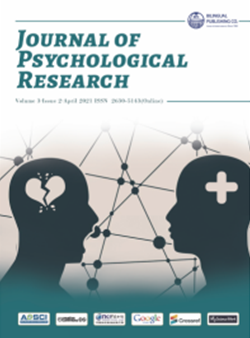-
1523
-
1339
-
1324
-
1321
-
1196
Higher Secondary Commerce Students’ Engagement and Attitude towards Blended Learning Environment
DOI:
https://doi.org/10.30564/jpr.v3i2.2965Abstract
At present, classroom instruction should be a self-regulated process and the learner who is self-motivated to explore problems and situations. For learning, the students are learning through the web as a source of knowledge, the learning environment should be shifted to a learner-centered rather than teacher-centered environment. Commerce education is to be directed towards mastery in its conventions and principles, towards thinking and solving problems in scientific ways, towards developing a positive outlook to the discipline at the higher secondary level. Attitude towards learning is associated with the academic performance of commerce-related tasks and improving achievement. It should be one of the basic features in designing effective commerce classroom instruction. In the present study, students’ attitudes can be enhanced by using a blended learning instructional strategy targeting the variables of learner attitude towards learning of instructional transaction, learning task, classroom interaction, and assessment. The study employs pretest-posttest non-equivalence control group design under the quasi-experimental method. The sample consists of 80 students of standard XII, 40 students each in the experimental group and control group. Statistical techniques of descriptive statistics, t-test, and Cohen’s d were used for comparing the pretest and posttest scores of attitude towards learning and measuring the effect size between experimental and control groups. The findings of the study showed that there is a significant difference in the mean posttest scores of attitude towards learning between the experimental group and control group and the blended learning instructional strategy is more beneficial in developing the attitude of higher secondary school students when compared to constructivist teaching strategy.
Keywords:
Instructional transaction, Learning task, Classroom Interaction, AssessmentReferences
[1] Akkoyunlu, B., & Meryem, Y. S. (2008). A study of student's perceptions in a blended learning environment based on different learning styles. Journal of Educational Technology & Society, 11(1) Retrieved from http://search.proquest.com.
[2] Erdem, M., & Pinar, N. K. (2014). Students' opinions on Facebook supported a blended learning environment. TOJET: The Turkish Online Journal of Educational Technology, 13(1) Retrieved from http://search.proquest.com.
[3] Hyo-Jeong So. , & Thomas, A. B. (2008). Student perceptions of collaborative learning, social presence and satisfaction in a blended learning environment: Relationships and critical factors. Computers & Education, 51(1), 318-336.
[4] Kim & Jin-Young, (2012). A study on learners' perceptional typology and relationships among the learner's types, characteristics, and academic achievement in a blended e- education environment.t. Computers & Education, 59 (2), 304-315. Retrieved from http://dx.doi.org.
[5] Llorente, C., Maria, D. C., Almenara., & Julio, C. (2013). Blended learning: Attitudes, satisfaction, academic performance, and online communication in processes of university training. New Educational Review, 31(1), 28-39.
[6] Mangal, S.K, (2010). Essentials of Educational Technology. New Delhi: PHI Learning Private Limited.
[7] Owston, R., York, Dennis, & Murtha, S. (2013). Student perceptions and achievement in a university blended learning strategic initiative. Internet and Higher Education, 18, 38- 46. Retrieved from http://dx.doi.org
Downloads
How to Cite
Issue
Article Type
License
Copyright © 2021 K. Suprabha, G. Subramonian

This is an open access article under the Creative Commons Attribution-NonCommercial 4.0 International (CC BY-NC 4.0) License.




 K. Suprabha
K. Suprabha





